Harold Kovner had had an eventful life – from left-wing political activity to a board-level executive role at 20th Century Fox before making pornographic films on both coasts, and ending up as a witness in a divorce case that featured a female sex actor from one of his movies.
But, remarkably, the biggest drama was still ahead of him – and it featured the mob, allegations of child pornography, a landmark court case… and Vanessa del Rio.
The Harold Kovner story continues – and concludes with today’s story.
You can read the earlier parts of Harold’s story here.
———————————————————————————————————————————————————————
1973-1976 – Harold: Mr. Rewind and Fast Forward
After his unexpected and highly publicized involvement in a New York Supreme Court divorce case, Harold’s life was prolific on a number of fronts.
He continued making adult movies, both 8mm loops shot in his third-floor loft studio at 76 Franklin St which he sold to a mob-related lab on West 55th Street, and more feature films produced for the Greeks at Cosmos Films. Quite which films he made for Cosmos is hard to determine: after his court appearance, Harold was more determined than ever to keep his real name off the productions. Associates recall that he spoke about XXX films that were low budget shoots (“Z-level films” and “bargain basement”, he would joke) on both sides of the country up to the mid-1970s.
Harold hadn’t given up the idea of a mainstream film career either, and continued to work with friends dating back from the old days of Cinemart and National Telefilm Associates. He was still well-connected, and caught up with friends like Orson Welles and Eli Landau when they hit town. He wrote scripts that he pitched as potential film projects (a couple, ‘The Soft Touch’ and ‘Sex and the Married Woman’, written with friend Paul Rothman, were registered with the Library of Congress Copyright Office in 1973) but none of them seem to have progressed beyond the drawing board.
He was still active politically too, a well-known face at rallies and left-wing meetings around the city. In 1970, he was involved in the infamous Hard Hat Riot, when violence erupted in the streets near his studio between pro-Vietnam War construction workers and students protesting the Kent State shootings and the U.S. invasion of Cambodia. Thousands of people were drawn into the conflict, with pitched battles taking place as the workers chased students through the streets. Harold was caught up in the fighting, though admitted afterwards that he was getting too old for such scraps.
In addition to film projects, in 1971 he’d started a 9-5 day job doing what he loved most: being a sound engineer. He worked for an audio tape duplication company, Barclay-Crocker, whose offices at 11 Broadway were a mere stone’s throw away from his own studio. The company targeted keen audiophile customers by producing tapes whose sound quality was vastly superior to anything else made for the consumer market at the time. [To get technical, Barclay-Crocker’s business model was to carefully select high-quality recordings from (almost always) classical labels and make a 1/2″ running master from the original at 15ips. This running master was used to produce the released tapes at 4-to-1 speed, with no more than five tapes being produced at any one time (and sometimes just one). Typical mass-produced tapes were duplicated in much greater numbers at 8-to-1 or even 32-to-1 speeds, which limited frequency response and thus could more easily produce unwanted speed variations. In addition to the actual high-touch process, Barclay-Crocker also used exceptionally high-quality tape for their releases. Got all that? Phew. Let’s move on.]
Harold was put in charge of duplication for the company, remastering 180 recordings from 1972 to 1985, and was quickly revered in this world for his technical knowledge and the quality of his work. One article in Musical Heritage Review demanded: “Give the great Harold Kovner, the Barclay-Crocker tape engineer, a medal: I vote to strike one of solid gold, as big as a pie plate.”
Harold, whose nickname was ‘Mr. Rewind and Fast Forward’ on account of his tape responsibilities was happy doing the audio work – alongside the occasional incognito adult film assignment.
*
1976 – Cops and Robbers
On the surface, the battle for and against pornography in New York in the 1970s resembled a cat and mouse game.
On one side were the suppliers: the adult filmmakers and actors, the labs that made film prints, and distribution networks that ensured the XXX films found their way to exhibitors and buyers. Pitted against them were their pursuers – the forces of law and order: Robert Morgenthau, the District Attorney, prosecutors, undercover NYPD officers, and rank and file cops.
In practice however, it was more complicated than that. Take the infamous porn bust of 1977 for example.
Archie Cavelli had been running Criterion Film Labs Inc. at 415 West 55th Street for a number of years. He’d started out as a well-respected laboratory supervisor for Berkey Films, a movie processing company, but lost his job in 1968 when he admitted to using the company’s facilities to process softcore porn after hours. So he started Criterion Film Labs, ostensibly an above-board business serving the mainstream New York film industry. But old habits die hard and Criterion developed a separate after-hours business, serving a more lucrative, higher-margin clientele, as a processing and distribution center dealing in hardcore pornographic material. This client group included the Greeks at Cosmos Films, as well as Harold who sold them his 8mm loops. The shady new business meant shady new associates, and Cavelli was visited by low-level mobsters and encouraged to take on a couple of associates, Douglas Rega and his uncle, Fred Todaro – a couple of Cosa Nostra-connected heavies.
In 1976, Cavelli hired attorney Richard Wynn, a former Manhattan prosecutor for District Attorney Frank Hogan, to take care of any legal issues for the business. When Cavelli stopped paying Wynn’s retainer, Wynn suggested that they form a partnership, and sell Criterion porn films to third parties. Wynn would come up with the buyers and would pocket a finder’s fee in lieu of the money he was owed. Cavelli agreed to the deal.
One of the first buyers Wynn introduced to Cavelli was a shifty-looking character from New Jersey who claimed he represented a network of peep shows and several private collectors. Cavelli negotiated the sale of 625 reels of vanilla XXX feature films to him – but also 125 reels of two films of child pornography. What Cavelli and Wynn & Co. didn’t realize was that the prospective buyer was an undercover detective working for the New York D.A., Robert Morgenthau.
This was exactly what Morgenthau had been looking for: his office had long been criticized for not doing enough to clear up the streets of New York, and in response, had committed to address the issue. The re-set had involved a change in tactics: “We’re now concentrating on large-scale producers, processors, and distributors,” he said, “(because) the usual procedure of arresting peep-show operators has been ineffective.”
But Morgenthau wanted more than just Wynn and Cavelli – he wanted to sink the whole Criterion Labs business. So he instructed the cops not to bust Wynn and Cavelli immediately over the child porn deal, but instead to initiate a second investigation: a different undercover detective was to approach the other Criterion owners, Douglas Rega and Fred Todaro, posing as another film buyer. A crack team was assembled, including Frank Saccio (who posed as ‘Frank from Downtown’), Sal (the ‘money man from Vegas’), an accountant, a bodyguard, and a chauffeur.
Frank reached out and made contact with Rega and Todaro but it was a slow process: according to police records, establishing trust between the detectives and mobsters took months to achieve.
*
1976 – Mob Battles
Meanwhile, within Criterion – and unbeknownst to the police – a power struggle was taking place.
It started with Fred Todaro’s divorce, an acrimonious and public battle that was scarring the New York court system. Todaro didn’t want to pay his soon-to-be ex-wife a single dime, and so was pleading abject poverty in every direction. The problem was his lucrative interest in Criterion Film Labs, with its expensive midtown offices and a healthy client list that generated sizeable profits each month. Todaro needed to conceal his interest in the business, and so he transferred it, on a temporary basis, to his nephew (and Criterion co-owner), Doug Rega.
The ruse worked: Mrs. Todaro was dispatched with a minimal pay-off, and Todaro was ready to re-assume his share of the partnership.
Not so fast, said Rega: the legal paperwork proved the business now belonged to him. Rega said he worked harder than his uncle, as well as being 30 years younger. The future belonged to him. What was Uncle Todaro going to do about it?
Rega was being greedy: the reason for double-crossing his uncle was that he’d been approached by a buyer wanting to convert the Criterion building into luxury condos, and Rega wanted to cash in and pocket all the proceeds.
He also wanted to continue the porn operation by partnering with another mobster, Roy De Meo, who promised Rega he could increase the size of his distribution network. De Meo’s gang, aka The Crew, was part of the Gambino family, and was well-versed in trafficking sex films, as well as for the staggering number of murders they committed and the grisly way they disposed of the bodies.
Fred Todaro responded by suing Rega over the ownership of the Criterion building and the film lab equipment within it. Rega defended himself by claiming his uncle was an incompetent business man who had sold his interest in Criterion and was now experiencing seller’s remorse. Todaro refused to drop his legal claim, so Rega paid him a visit at Rega’s aunt’s house. According to court records, he beat Todaro while attempting to kidnap him.
Despite their conflict, Rega and Todaro outwardly kept up the pretense of being joint partners of Criterion.
*
1977 – Undercover Sting
The District Attorney’s investigative operation came to a head.
‘Frank from Downtown,’ the undercover detective on the case, made a deal with Rega and Todaro to pay $20,000 for 4,000 copies of two 15-minute films depicting underage boys and girls performing sex acts.
Not just that, but Morgenthau’s team had another significant lead: surveillance teams had observed a portly man visiting the Criterion lab on several occasions, usually armed with a large back bag which he always left in the offices. The cops tailed the man on the subway back to a downtown studio which they learned was used for filming sex scenes. The man was identified as Harold Kovner.
‘Frank from Downtown’ was sent over to see if he could link Harold into the Criterion operation. Frank explained he was associated with Criterion Labs. He said he wanted nine new hardcore loops for his adult bookstore, and was prepared to pay Harold $2,500. Harold said he needed to check Frank’s story, so he called Rega and Cavelli at Criterion who confirmed Frank was good people. Harold said he’d film the loops the following week. He asked for a deposit to show good faith: Frank gave him $40.
Morgenthau was pleased with the progress. The operation had uncovered enough information on the Criterion distribution hub as well as Harold’s production location, so the D.A. ordered the detectives to move in.
On Tuesday April 26th, 1977, two separate raids took place. The first was at 9am at Criterion Film Labs on 55th Street. The second, at 3pm, was at Harold’s studio on Franklin Street.
*
1977 – Harold and the cursed Vanessa del Rio loop
The day started with the expectation of a loop shoot similar to all the rest he’d done over the years.
It had been a quiet period in the Barclay-Crocker offices, so Harold took a few days off and hired actors for an afternoon/evening shoot at the Franklin Street studio. The first three performers – Ana Sanchez (better known by her nom-de-porn, Vanessa del Rio), William Rivera, and Dennis Aponte – arrived at lunchtime, and Harold got to work straight away.
Three hours later, the shoot was interrupted by a loud banging at the door. According to news reports, it took 25 detectives to raid Harold’s studio. Vanessa del Rio remembered the bust in her biography: “All of a sudden, these cops come in, FBI, whatever, in plain clothes, a woman and some men, and they said, “You’re under arrest,” and of course, because it was in the middle of a sex act, we thought it was a joke.”
The detectives came across more than 100 master copies of “peep show films.” What was even more unusual than the heavy-handed raid was that the officers were accompanied by six criminal court judges: Morgenthau, aware that a film could only be seized if a judge ruled that it was obscene first, arranged for an immediate viewing of the films in Harold’s studio (“one of the more bizarre film festivals,” declared the New York Times).
The result? The collections of judges deemed that Harold’s loops were obscene, and they were all seized and taken back to the precinct – together with all of his cameras and editing equipment. “We’re not talking about any kind of ‘Deep Throat’ or ‘I Am Curious, Yellow,’” Morgenthau told the New York Times. “I can see no conceivable redeeming value. This is real triple-hard-core stuff, and it’s just disgusting.”
The raid was all over the news. As Vanessa (described as “shapely” in next-day newspaper reports) recalled it: “I remember saying to a reporter, John Johnson, on TV that pornography was for the betterment of America (laughs). They were hauling us out of this little loft, and everyone was covering their faces, you know the way they do, with a T-shirt, or their arm? And I knew I had done nothing wrong, so I just boldly went out in the street while the cameras were rolling, in handcuffs, with my head held up. They followed us into the precinct, in front of the desk, and all the way through booking.”
All four were arrested: Harold was charged with first degree obscenity, punishable with a seven-year jail term, and the three performers with second degree obscenity, punishable as a misdemeanor with a year in jail. Harold’s actors were listed as: Anna (sic) Sanchez, 25, of 40 Harrison St, William Rivera, 20, address unknown, and Dennis Aponte, 22, of 39-65 52nd Street, Woodside, Queens.
The problem for Harold was that when word of his arrest hit the TV news that evening, and then the tabloids the following day, his name (“one of the city’s major pornographic film producers,” raved the Daily News) was immediately linked to with the child pornography raid at Criterion Film Labs – with the suggestion that he had made the illegal films.
8 Held as Principals in Smut Production – New York Times, April 27, 1977
The Manhattan District Attorney’s office capped a seven-month investigation yesterday by arresting eight alleged pornographers on felony charges and seizing 4,000 copies of pornographic films involving children between 8 and 12 years old.
‘Police Raid Gets ‘Smut Producer – Press and Sun Bulletin, April 27, 1977
NEW YORK (AP) – In the latest in a series of anti-pornography raids here, police have arrested a man described as a major producer of smut movies and seized 4,000 films, some of them depicting children engaging in sexual intercourse.
According to friends, the whole event shocked Harold profoundly. The misapprehension would cause Harold much personal pain and anguish: “How can I look anyone in the eye if they think I’m a child pornographer?” he asked his brother at the time. In some corners, this mis-categorization continues to this day. In Vanessa del Rio’s biography, she declared: “The guy they were after, Hal Kovner, was a known child pornographer, unbeknownst to us. We only knew him for making adult loops. The cops could not set up a sting using children, so they used us. They acted as if they were the buyers for the loop.”
The widespread publicity that Harold’s arrest received reached the Italians uptown who had just been busted at Criterion Labs. They feared he would squeal and reveal details of their relationship. They visited Harold in his studio, and over the course of a fraught evening of conversation – not to mention threats to his life, equipment-smashing, and roughing him up – the mobsters made clear that if Harold gave up any information relating to their activities, he’d find himself at the bottom of the Hudson River. For months afterwards, Harold had a heavy sat in a car outside his studio. He said he never knew whether it was to keep an eye on him or intimidate him.
No wonder Harold referred to the incident in the years that followed as the “cursed Vanessa del Rio loop.”
*
1979 – Harold and the Obscenity Trial
It took two years for Harold’s obscenity case to come to trial. It was a painful period with the specter of child pornography over him as a result of the press coverage, not to mention the sporadic visits from mobsters to check on who he was speaking to.
When he went to trial, there was no mention of child pornography. That alone was a victory for Harold, but it felt hollow. It was too late. The fact that he had been arrested and linked to kiddie porn had lost him long-term friendships, not to mention any sense of respectability.
In court, he faced a grand jury, eight women and four men, who would decide if his films were obscene. The prosecution alleged that Harold’s films “depicted humans as animals… and are completely obscene.” Three of the films seized even featured “homosexual actors.” The horror.
The defense claimed it was entrapment: Harold wouldn’t have made the loops had he not been hired by the undercover detective, ‘Frank from Downtown.’ Harold’s attorney, the perennial porn defender Herbie Krassner, put it succinctly: “The cops got what they asked for… and then they arrested (Kovner) for getting what they asked for.”
The Assistant District Attorney disagreed with the entrapment argument: he contended that Harold was “so well-insulated by layers of protection” from the mob that it was “fair practice” for the cops to solicit the films.
On February 1, 1979, the Manhattan grand jury returned its verdict: by applying contemporary community standards, Harold was acquitted. The jury had taken the opposite view of the six criminal judges who’d sat on office chairs in Harold’s studio saying that the films were blatantly obscene. Now it was official: in New York, these films were inoffensive, and the government should not be entitled to interfere with their showing to consenting adults.
*
Harold on Trial, Again: Sex Films vs. Prostitution
Aside from obscenity, Harold and the three actors faced an additional charge – and this one was legally more consequential: had they been promoting prostitution?
For the first time in New York history, the state’s prostitution statute was being invoked in an effort to curb pornography. In other words, Harold’s filmmaking activity was being treated in the same way as if he had been running a prostitution ring. Apart from being an adult film director, was he a pimp as well?
At issue was Section 230 of the penal law: this stated that “a person is guilty of prostitution (if they) engage, or agrees, or offers to engage in sexual conduct with another person in return for a fee.”
Harold was charged with promoting prostitution – not just because of the production and sale of films that depicted explicit sexual conduct, but because he had hired the actors, provided the money and premises, and directed the performances in order to profit from the transaction. In other words, he had an underlying contract that fell within the definition of prostitution as defined by Section 230.
Harold contended that the production of motion pictures was constitutionally protected, and that the receipt of money by actors and actresses, even if it was for the expressed purpose of participating in filmed sexual conduct, could not constitute prostitution within the meaning of Section 230.
But Justice Robert Haft of the New York Supreme Court, New York County, did not agree. He pointed out that the legislature was intended to prohibit sexual conduct of a commercial nature, and that it didn’t matter if the fee paid for the sexual activity was provided by a non-participant. He thus ruled that the hiring of actors and actresses to engage in filmed sexual contact did indeed constitute prostitution.
It was a landmark decision – and one that Judge Haft didn’t take lightly, declaring that he was “mindful of the fact that a literal interpretation of the prostitution laws may create a chilling effect on the exercise of First Amendment freedoms.” [To justify his decision, Judge Taft emphasized that when “a state undertakes to regulate a social evil such as prostitution or pornography, it has a greater power to regulate the physical contact which may occur then to suppress depictions of the same. While First Amendment considerations may protect the dissemination of printed or photographic material regardless of the matter in which it was obtained, this protection will not shield one against the prosecution for a crime committed during the origination of the act.”]
Ironically, a decade years later, a similar case, People v. Freeman, was tried in California – and Kovner’s case was cited extensively. It involved Hal Freeman, a producer and director of pornographic films, who had been arrested for producing and directing ‘Caught from Behind, Part II.’ He was charged with pandering – procurement of persons for the purpose of prostitution – under section 266i of the Cal. Penal Code. The California Supreme Court found that the California pandering statute was not intended to cover the hiring of actors to engage in sexually explicit but non-obscene performances, and that Freeman could only have been lawfully convicted of pandering if he had paid the actors for the purpose of sexually gratifying himself or the actors. As a result of the ruling, the making of hardcore pornography was effectively legalized in California.
For Vanessa del Rio, who faced the same prostitution charges for having appeared in Harold’s loops, the court’s decision was the ultimate irony: it hinged on the fact that she’d received money to have sex – but because of the raid, she’d actually never been paid: “The charge was prostitution because I was allegedly performing sex for money. I had to hire a lawyer to get me off. This guy was a glasses-wearing, wrinkled-suit, sweaty kind of man, and he was so overcome by getting to be near porn that it didn’t occur to him that I hadn’t even been paid… and therefore it couldn’t be prostitution. So I was convicted, and all I was supposed to get paid was 40 bucks.”
For Harold however, it was the last straw. He’d been cleared of obscenity but found guilty of aiding and abetting prostitution – and in the eyes of some, the media coverage had created a lingering belief that he’d been involved with child pornography as well. He’d been in the film business for over 30 years, but he’d had enough.
*
1978 – Criterion Labs on trial
The other raid on April 24th, 1977, the one at Criterion Labs, had resulted in the arrests of the three principals of the company: Douglas Rega, 28, of 1158 Bergen Avenue, Brooklyn, Fred Todaro, 58, of Lake Success, Long Island, and Archie Cavelli, 51, of Westfield, NJ. They were all charged with first degree obscenity punishable by a maximum of seven years in prison, and Rega was also charged with unlawful possession of a gun (an additional seven years in jail.)
The full picture emerged – revealing how Richard Wynn, the Manhattan attorney, had formed a porn-partnership with Archie Cavelli. Wynn was arrested and confessed to the scheme, entering a plea to a charge of conspiracy. By confessing to the misdemeanor, he avoided automatic disbarment and a possible jail term of seven years. He was released and continued working in private practice in Manhattan.
The Criterion Lab court obscenity case was heard in June 1978. Having spent the best part of a year on undercover and surveillance operations, expectations from the D.A.’s office were high, and sure enough, the defendants were found guilty of trafficking in child pornography. However the prosecution was shocked when the presiding judge, Justice Jerome Marks, handed out sentences of just two months to each of the two ringleaders, Rega and Cavelli.
The D.A. was angry, and he wasn’t the only one. The Daily News branded Justice Marks “the worst judge in New York.” The newspaper claimed that he had asked specifically for the case to be assigned to him, knowing that he could hand out reduced sentences. Justice Marks attacked back, suing the Daily News for $1 million.
*
Fast Forward – Cops and Robbers
In early 1979, Doug Rega had a sit-down meeting with members of the Castellano gang: he called the gathering to get approval for the killing of his uncle and Criterion Labs partner, Fred Todaro. He’d had enough of Todaro’s interference and wanted a permanent solution.
The job was agreed and given to Rega’s partner, Roy De Meo, in exchange for a $10,000 payment. A few days later, Todaro was killed at the infamous Gemini Lounge in Brooklyn, his body dismembered and disposed of by the Crew.
The problem was that everyone knew Rega and Todaro had been fighting for years, so the finger of suspicion immediately pointed towards Rega. To cover his tracks, Rega filed a spurious lawsuit against Todaro over a business matter, even though Todaro was already dead. For a time, the deflection worked: there was no body, and no arrests were made over Todaro’s disappearance.
Rega took over what was left of the Criterion Film Labs business assets and worked with De Meo’s crew under mob boss Paul Castellano. He continued to duplicate pornographic films, storing them in his mother’s house, and then distributing them to the DeMeo Crew who sold them profitably around the country. Over the next years, Rega was repeatedly arrested for charges ranging from mail fraud to extortion, but always found a way to wriggle out of legal consequences.
In 1989 however, the Todaro murder finally caught up with him, and Rega was convicted for the crime. After a lengthy sixteen-month trial, he was found guilty. Rega appealed on various grounds: that evidence was improperly admitted and legally insufficient, that his counsel had been ineffective, and that the government’s remarks during summation were prejudicial. He lost again, and was sentenced to 40 years in jail.
In 1996, he tried again, claiming that his counsel had refused to let him testify at the original trial in violation of the Sixth Amendment. This time the district court decided that Rega had shown a reasonable probability that, had he testified, he would have been acquitted. As a result, in 2001 the court case took place all over again. This time, Rega denied any involvement in the pornographic film business, indicating that Todaro might have been involved with pornographers without Rega’s knowledge. Rega stated that the only difficulties he’d had with his uncle had been the result of Todaro’s lack of management skills and irrational character. Rega insisted he was a family man who “lived by the Ten Commandments.” The judge was bemused, and ruled against him: he said that had Rega been allowed to testify, he would have done more harm to his case than good. Rega was sent back to jail.
Rega was released in recent years, and today lives quietly in New Jersey.
*
Fast Forward – Harold Kovner
Barclay-Crocker stuck by Harold during and after his court cases.
Despite its small size and niche market sector, the company built up a stellar reputation and much of this was down to Harold. He single-handedly designed the company’s mastering and duplicating system, which The Washington Post music critic said produced “the finest sound I have ever heard from a commercially-distributed recording.”
The business was a boutique, low-volume, high-quality affair (only 150 tapes were duplicated on a good day) which suited Harold at this stage in his life. He told friends he just wanted to work quietly, perfecting his craft, and producing beautiful-sounding music.
His eventful life had spanned World War I and ended in the era of home video. He had known business success and failure, filmmakers of the likes of Orson Welles and influential movie producers such as Erich Pommer and Ely Landau, he’d been a socialist and anti-fascist activist and best friends with one of the unheralded heroes of World War II, worked for 20th Century Fox, owned a burlesque joint, filmed porn on both coasts for Greek immigrants and Italian mobsters, been the subject of landmark obscenity and prostitution court cases, and was now recognized as being one of the world’s leading experts in sound engineering.
Friends remember that, as much as he liked to look back and contemplate all that he had done, he was amused by the anonymity that he had enjoyed. “No one will ever know the full extent of my life,” he joked to his brother in the 1980s.
Harold Kovner died in April 1984.
*
*
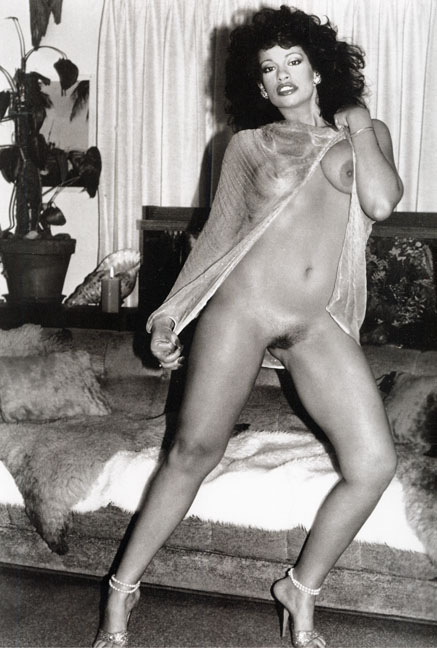
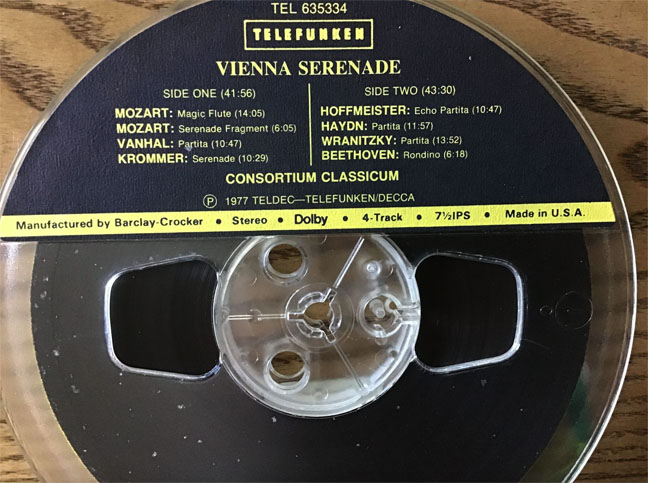
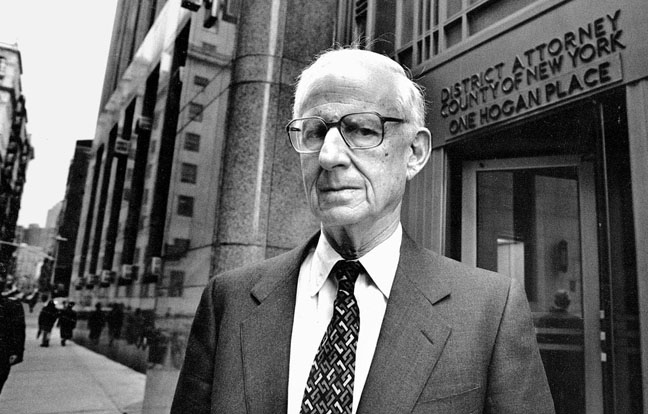
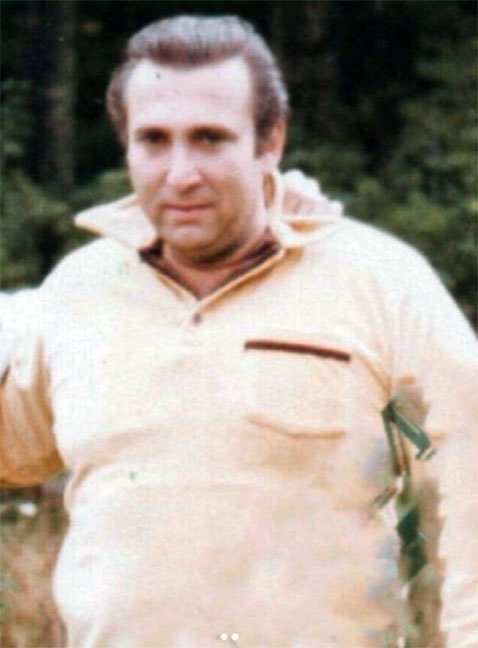


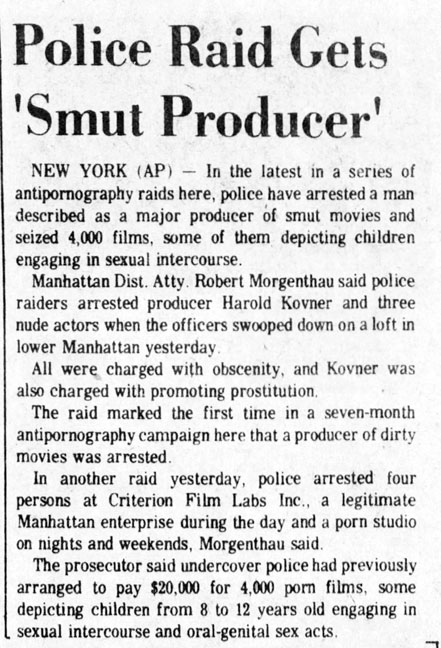
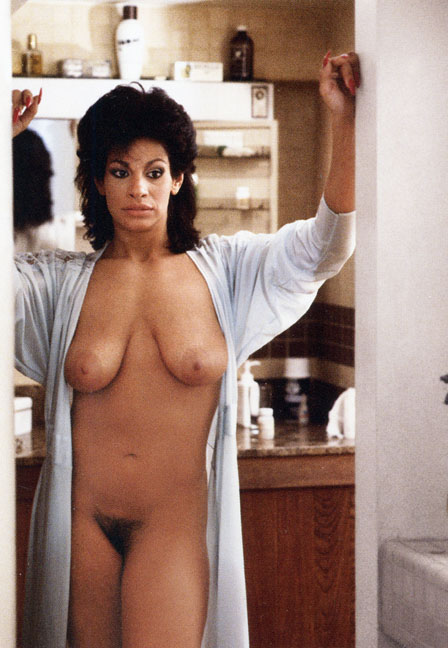
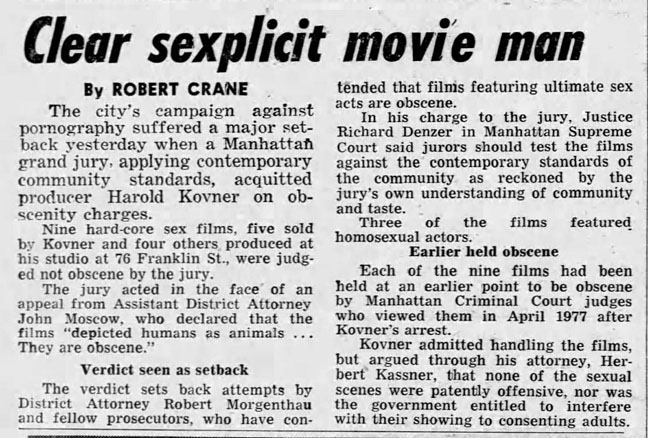

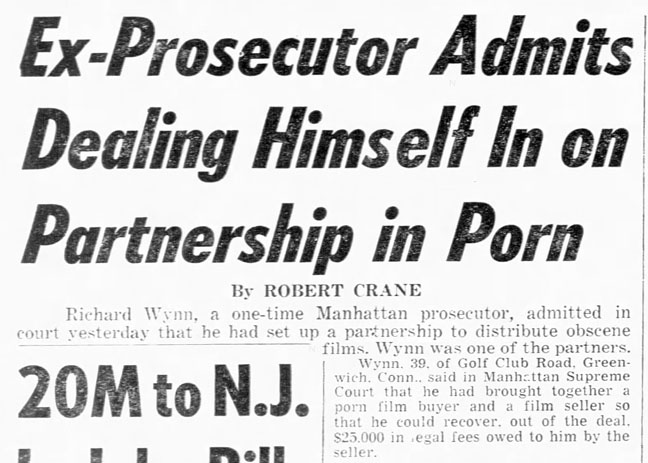
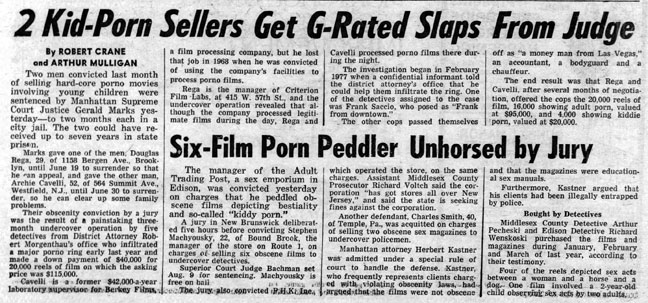



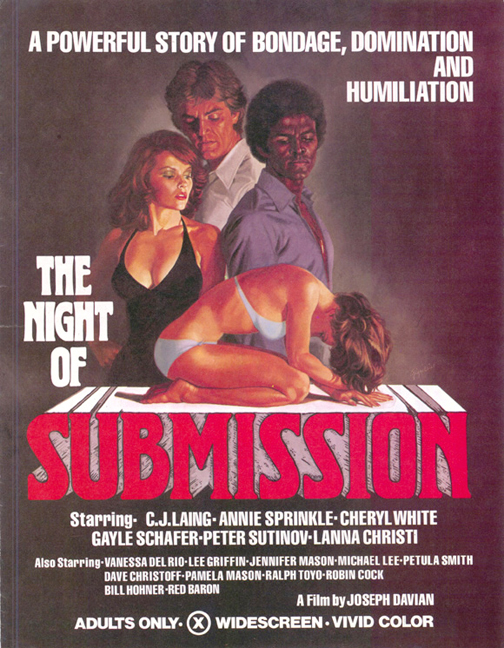
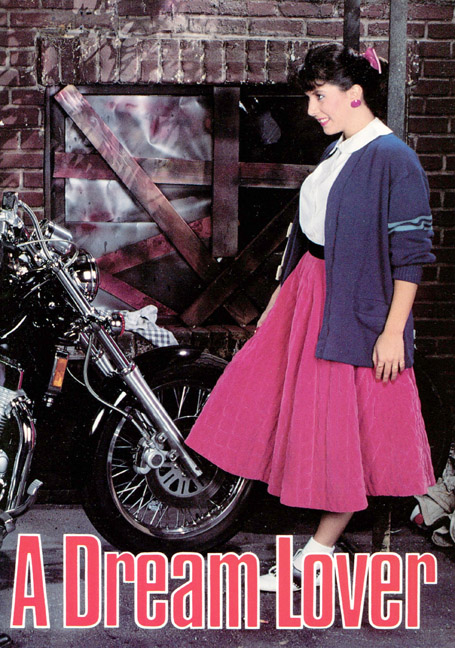
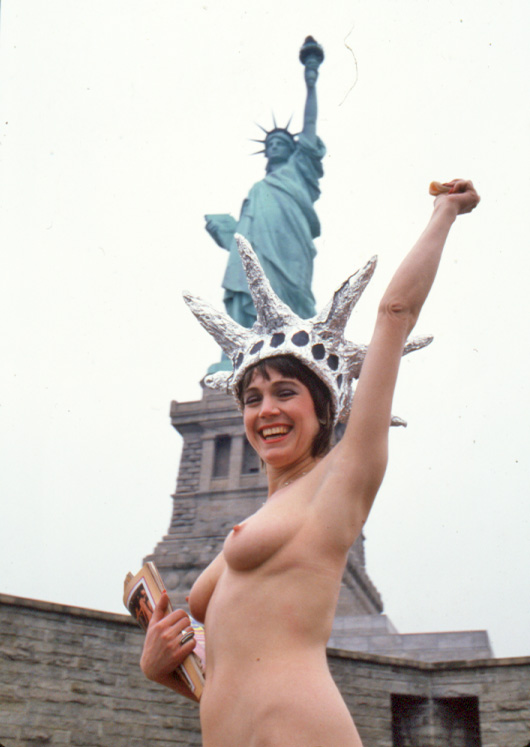

Vanessa Del Rio So Sexy From The 70s 80s And Early 90s Keep Up Good Work
…another incredible STORY….that if it wasn’t ALL true….you’d NEVER believe it….thanx for this…
Agreed, Arisaig…
The 4-part Harold Kovner series reads like some sort of delectable, fact-checked Harold Robbins novel. Over-the-top Sunday armchair entertainment. Throw in the scorching element of Ms. Del Rio to end the weekend on a fiery, high-heeled note. Rialto Report Serial Investigations never disappoint!
What an epic life Harold led. Nice work telling us his story in such great detail. It must have taken a lot of painstaking research, considering that he has been dead for 41 years now. I’m sure he would be happy you are setting the record straight in regards to his reputation in that he was not a child pornographer. What a story, and only to be heard here on the Rialto Report. The RR truly represents investigative reporting. Thanks for sharing this epic tale with us.
Another epic story of an incredible life. Fantastic work as always! I was enthralled all the way.
I have just “binge read” the four parts of this enthralling tale. The RR has done it again – superb research and journalism about a story that would otherwise be lost to obscurity. Well done!
This was such a mind blowing read weaving together serpentine threads of mind blowing history. Eager to see a long form documentary/ epic tome; for this is truly Pulitzer level literature shedding light on the human condition. I need to go check out “Transatlantic” now. This read also took right back to the zeitgeist of “The Deuce” of the 1970s. I’ve been a fan of your guys’ work since 2014ish; thanks for keeping this labor of love going and treating the denizens of the industry with such respect